
Finally we are in Roma, are last stop. This is the view from the Bridge of Angels.
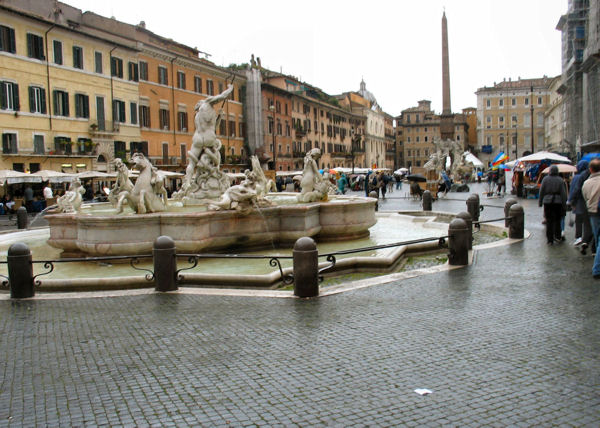
Piazza Navona is a city square in Rome. It is now the pride of Baroque Rome. It has many sculptural and
architectural creations.
This is the Fountain of 4 Continents by Bernini. Notice that each of the 4 sculptures are looking away from the
church in front of it. This is because it was designed by a competing artist and Bernini did not want them
looking at it.
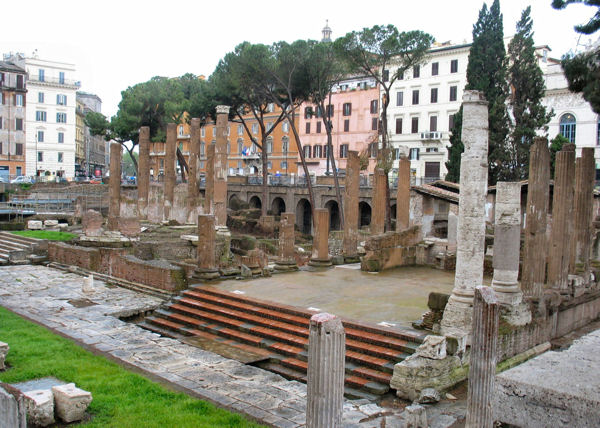
This is the original centre of Rome, Largo Argentina. It was fairly recently discovered, by accident, when
uncovered during a construction project.
Now we are in the Vatican. This design on the wall, although it looks 3 dimensional, is actually flat.
Through the years, it became quite dirty, and a cleanup was financed by the Japanese. The black stripe has
been left to show what it looked like before.
This is the ceiling of a long corridor, many paintings framed in gold.

St. Peter's Dome, viewed from the inside. Stairs wind around it between the inner and outer walls, so that if you
are not claustrofobic, you can climb to the top.
St. Peter's Dome, viewed from Vatican Square. Notice all those who have made the climb.
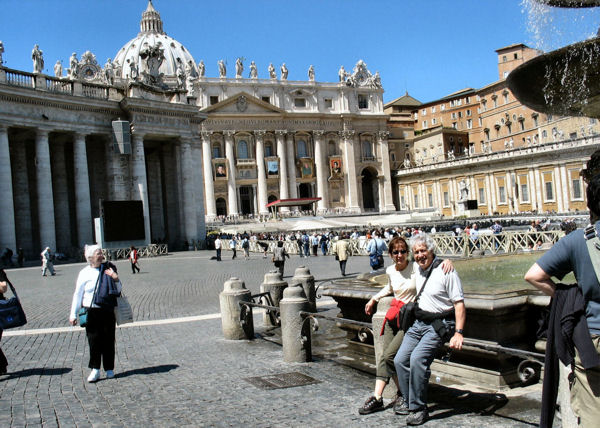
Here we are at a fountain in Vatican Square, with St. Peter's Dome in the background.
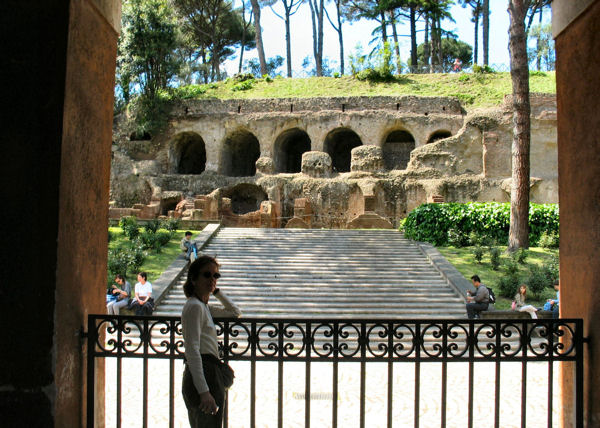
Near the Coliseum can be found the remains of a Roman Emperor's Palace.
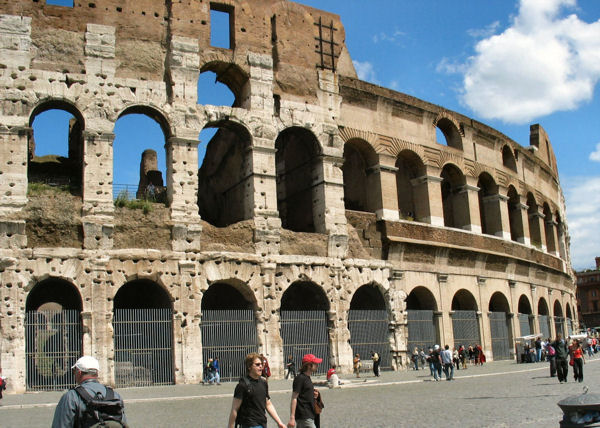
The outer walls of the Roman Coliseum.
Inside the Coliseum - The white marble area is the original steps.
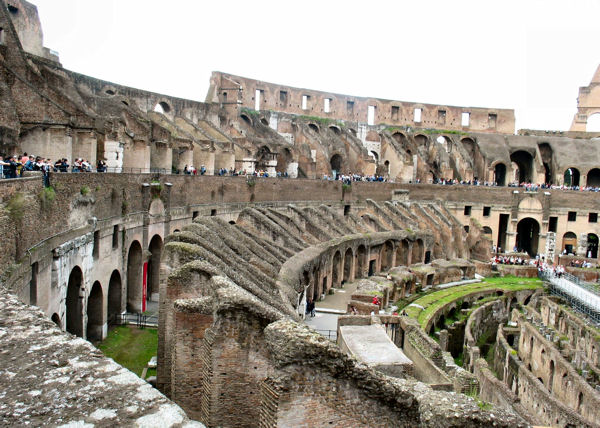
This shaded side of the Coliseum would have been preferred by the Emperor. The low areas in the bottom
right was used for storage (including lions).

Near the Coliseum is the Arc of Triumph.
.JPG)
Also near the Coliseum is the Arch of Titus, who was responsible for the destruction of Jerusalem.
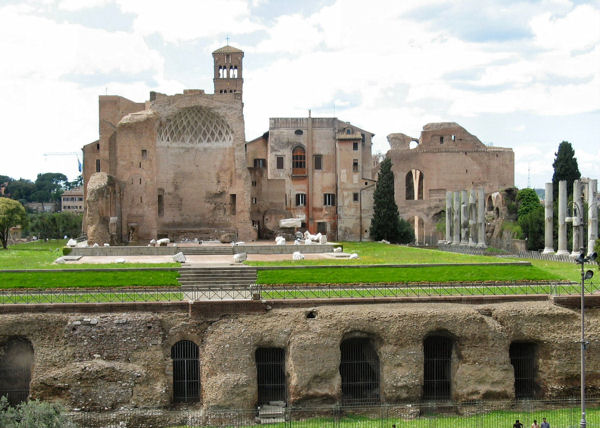
The Temple of Venus & Rome.
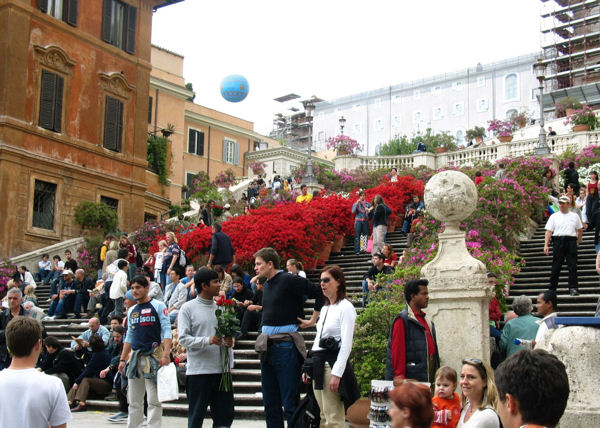
These are the famous Spanish Steps, the "longest and widest staircase in all Europe".
These are the remains of Rome's first shopping centre.
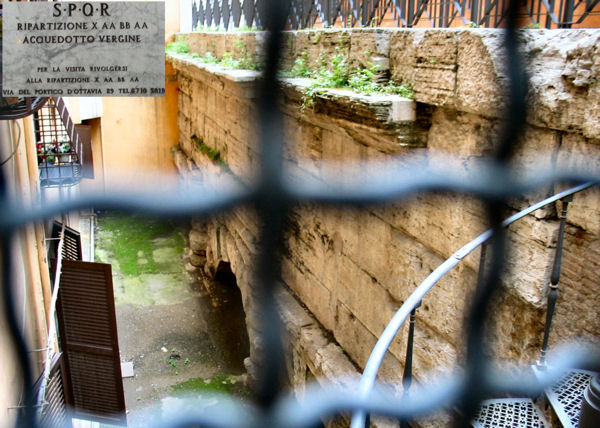
The Romans were famous for the building of aqueducts. The Virgin's Aqueduct is one of the few still visble.
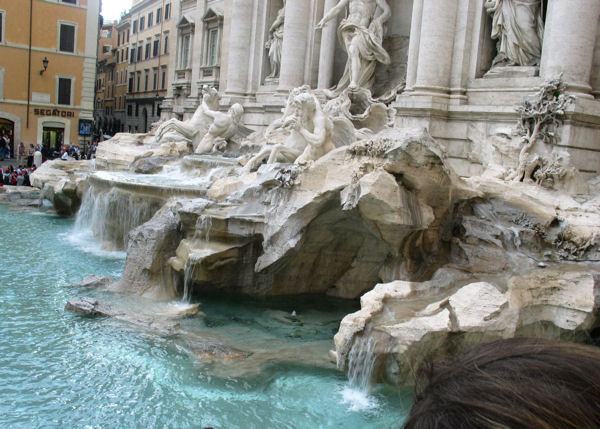
The Trevi Fountain is the largest - standing 26 meters high and 20 meters wide - and most ambitious of the
Baroque fountains of Rome. It is the terminal point of the Virgin's Aqueduct.
A traditional legend holds that if visitors throw a coin into the fountain, they are ensured a return to Rome.
A current version of this legend is that it is lucky to throw three coins with one's right hand over one's left
shoulder.
The Pantheon (meaning "Temple of all the Gods") is a building in Rome which was originally built as a temple to the seven deities of the seven planets in the state religion of Ancient Rome. It was built in 120-125 AD.
The building is circular with a portico of huge granite Corinthian columns. It has a concrete dome, with a central
opening (oculus), the Great Eye, open to the sky.